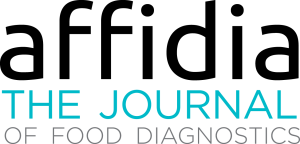Moving towards smart sampling for food safety, quality, and fraud control
Simple devices that can be operated by non-laboratory staff are sufficiently accurate for identifying suspected non-compliant food batches. This kind of smart sampling can replace random sampling and make way for more efficient food fraud and safety controls.
The food industry goes to great lengths to ensure the safety and quality of products on store shelves.
However, the odds are against the industry because quality control budgets are notoriously strained and food safety analyses are often performed based on risk assessment or, in the case of food fraud, on vulnerability assessment.
Another challenge for fast-moving consumer goods (FMCG) is the time-toresult and cost when sending samples to laboratories for quality control. This is especially true for hold-and-release products.
Most routine laboratories offer highend testing equipment like LC-MS/MS or GC-MS/MS to identify the smallest of pesticide residue traces or the presence of mycotoxins.
This type of testing is essential, not only for quality control but also to comply with existing regulations. But how are the samples to be sent to the laboratory selected?
When we consider food ingredient vulnerability screening (Popping et al. 2020), some of the factors for assessment are the origin of the product, the degree of processing, and the history of adulteration. For example: whole peppercorns are more challenging to adulterate compared to ground pepper, which can be mixed with other components of lesser quality without being easily discernible. Similarly, a beef filet is easily identifiable as such, while minced meat can potentially be replaced by other, cheaper components to add weight.
Milk powder is another example. In a shipment of 100 bags of milk powder, how is it possible to verify that all 100 contain only dried milk and that none contain any melamine? Of course, a random sample sent to the laboratory with results received in three to five working days is a challenge because taking only one sample, potentially from only one of the 100 bags, may not be representative.
Are there better options?
The short answer is: yes, there are. This is where the concept of smart sampling comes into play. Smart Sampling is a procedure where the decision of which sample to take is supported by a device (e.g. a portable NIR or Raman spectrometer). Rather than taking a random sample from one of a hundred bags of product received, such decision support tools (DSTs) could be used to prescreen and select those bags whose profile differs from the reference profile for that substance, thereby identifying the one or two bags that might potentially be adulterated or that do not meet specifications.
What are typical DSTs?
Decision support tools are instruments used on-site at food manufacturers or by auditors and inspectors to make a first assessment of the product at hand. Such tools can typically be operated by non-scientific staff and deliver simple results, often binary, that allow the user to select suspicious products for indepth analysis in the laboratory.
Such tools are often handheld or have a small footprint and deliver rapid results after a screening or targeted analysis. Ongoing technological evolution and the trend towards miniaturization has made it possible for a number of startup companies as well as established players to developed these tools.
Typical decision support instruments are often based on one of t
Download content now



















